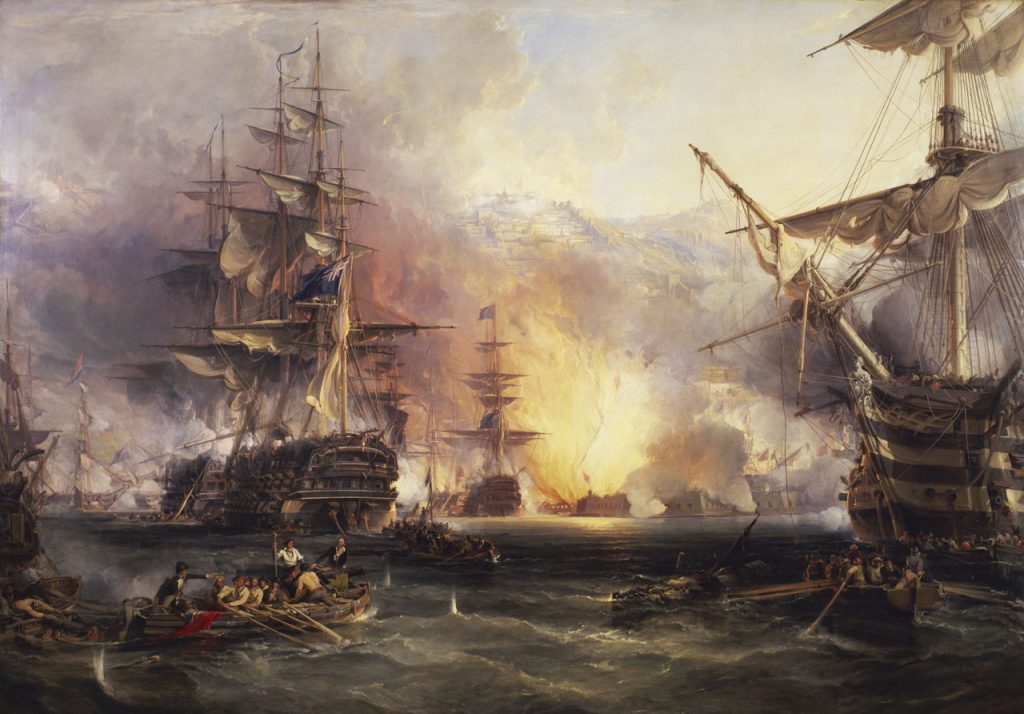The career of Captain Edward Aitchison was loosely similar to the fictional character Horatio Hornblower in the series of 11 books by C.S. Forester that followed the career of Hornblower from Midshipman to Captain. Although none of Edward’s family were from Belgrave, they did move to Belgrave and – apart from his youngest daughter – they are buried in St. Peter’s churchyard.
See the Blog at: https://belgraveheritagetrust.org/st-peters-church/the-aitchison-family/
Edward Aitchison, the son of Lieutenant Robert Aitchison RN and Mary Scott, was born in Melrose, Roxburghshire, Scotland. Edward followed his father’s career, entering the Royal Naval College at Portsmouth on the 10th February 1808 age 14.
The newly qualified Midshipman Aitchison was assigned to the crew of HMS Crescent, captained by Captain John Quilliam, who left a lasting impression on young Midshipman Aitchison. Born on the Isle of Man, John Quilliam had risen through the ranks from an Able Seaman to the rank of Captain; during his career as a naval officer he had shown outstanding seamanship and bravery, which led him to be selected by Admiral Nelson as a Lieutenant on HMS Victory. Nelson subsequently promoted him, and as 1st Lieutenant he took part in the Battle of Trafalgar. Although still a serving officer, John Quilliam was appointed to the Manx Parliament, but on his promotion to Captain, he resigned his position.
After commanding a number of ships, he was appointed captain of HMS Crescent, one of the navy’s latest 50-gun frigates. Edward saw action in the Baltics, protecting convoys of Russian timber, and the West Indies combating piracy in the Caribbean. Based on the Nova Scotia station to combat American privateers (i.e. a licenced pirates) which resulted in the capture of the 14-gun the “Elbridge Gerry” together with her crew of 66 men.
In 1815 Edward was assigned to HMS Leander. In 1816 HMS Leander was part of a fleet that took part in the “Bombardment of Algiers”, a major battle against the Ruler of Algiers, Omar Agha, designed to stop the trade in European slaves captured from the Mediterranean countries by the Barbary Pirates. After the abolition of slavery in the UK in 1806, the Royal Navy played a significant role in capturing slave-ships and freeing the (mainly) West African slaves but England was accused of focusing on the trade in these African slaves and ignoring the trade in European slaves practised by the North African countries, especially Algeria.
Diplomatic negotiations had failed to free the slaves, so a fleet, commanded by Admiral Sir Edward Pellew (later Viscount Exmouth), supported by a small Dutch fleet, arrived at Algiers. Having refused the option to free the slaves, the fleet commenced a bombardment of Algiers which lasted over eight hours, with HMS Leander playing a significant role, firing over 3,500 canon rounds. Edward was tasked with commanding a small boat, armed with a 12-pounder canon, to attack the Algerian ships. Edward was wounded during the action. but the Bombardment was a success, and three thousand slaves were freed at a cost of 152 officers and men killed and 661 injured
Edward was then assigned to the Coastal Battery, patrolling the English coast against smuggling. In 1816 he was put on shore-leave, and did not serve at sea again.
